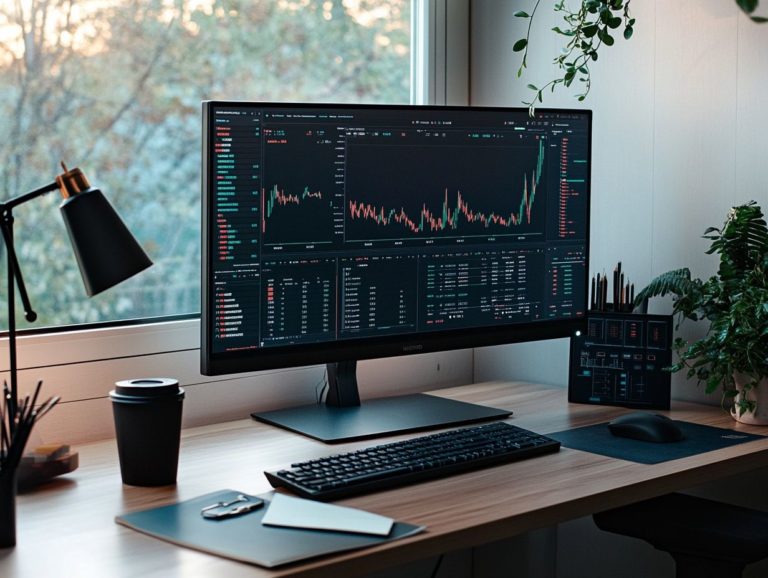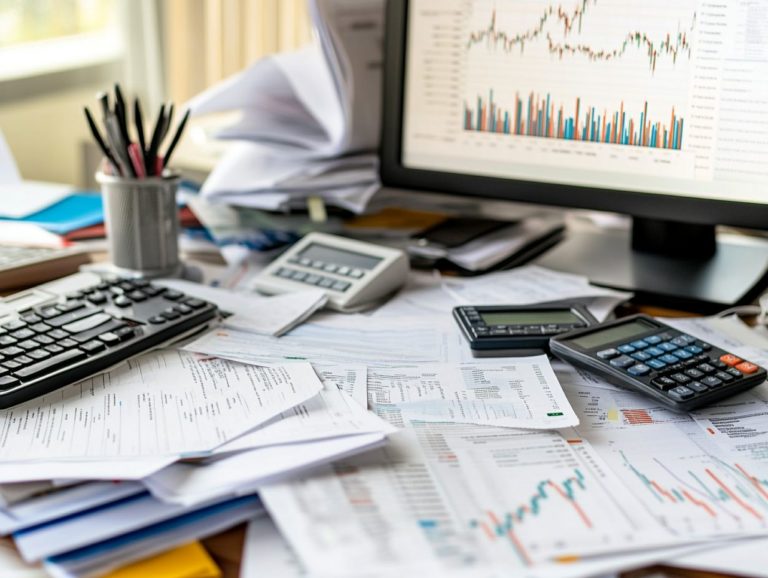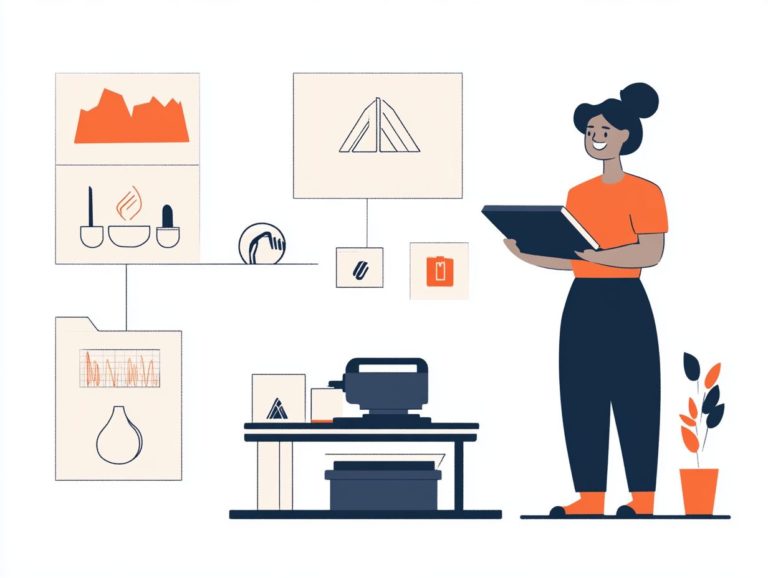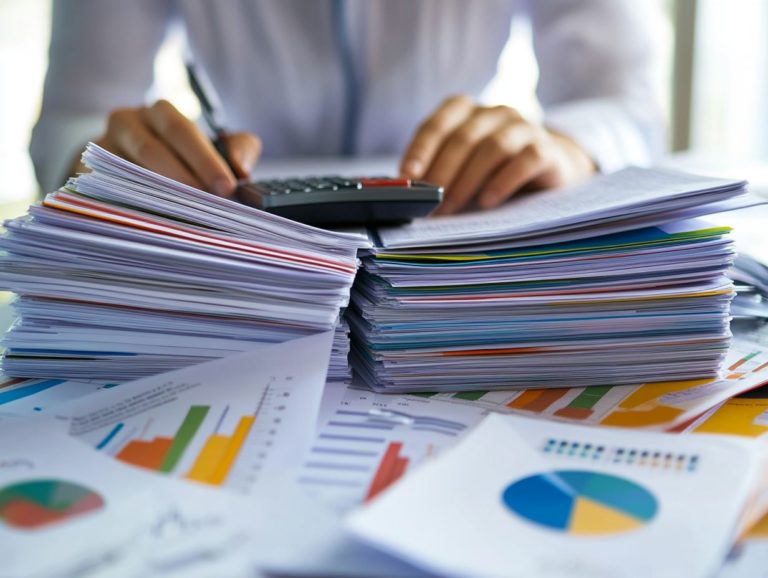Physical vs. Paper: Risks of Each Investment
Investing is your key to a secure financial future, but choosing between physical and paper investments can be daunting! Each option presents its own unique risks and rewards. Physical investments, such as real estate or precious metals, tend to offer long-term stability. However, they can also be susceptible to market fluctuations and security concerns.
Conversely, paper investments like stocks and bonds provide liquidity and diversification but are not immune to inflation and unpredictable market shifts. This exploration will delve into the advantages and disadvantages of both investment types, empowering you to make informed decisions that shape your financial landscape.
Contents
- Key Takeaways:
- Risks of Investments
- Risks of Paper Investments
- Benefits of Physical Investments
- Benefits of Paper Investments
- Frequently Asked Questions
- What is the difference between physical and paper investments?
- What are the risks associated with physical investments?
- What are the risks associated with paper investments?
- Which type of investment is more secure?
- How does liquidity differ between physical and paper investments?
- What factors should you consider when choosing between physical and paper investments?
Key Takeaways:
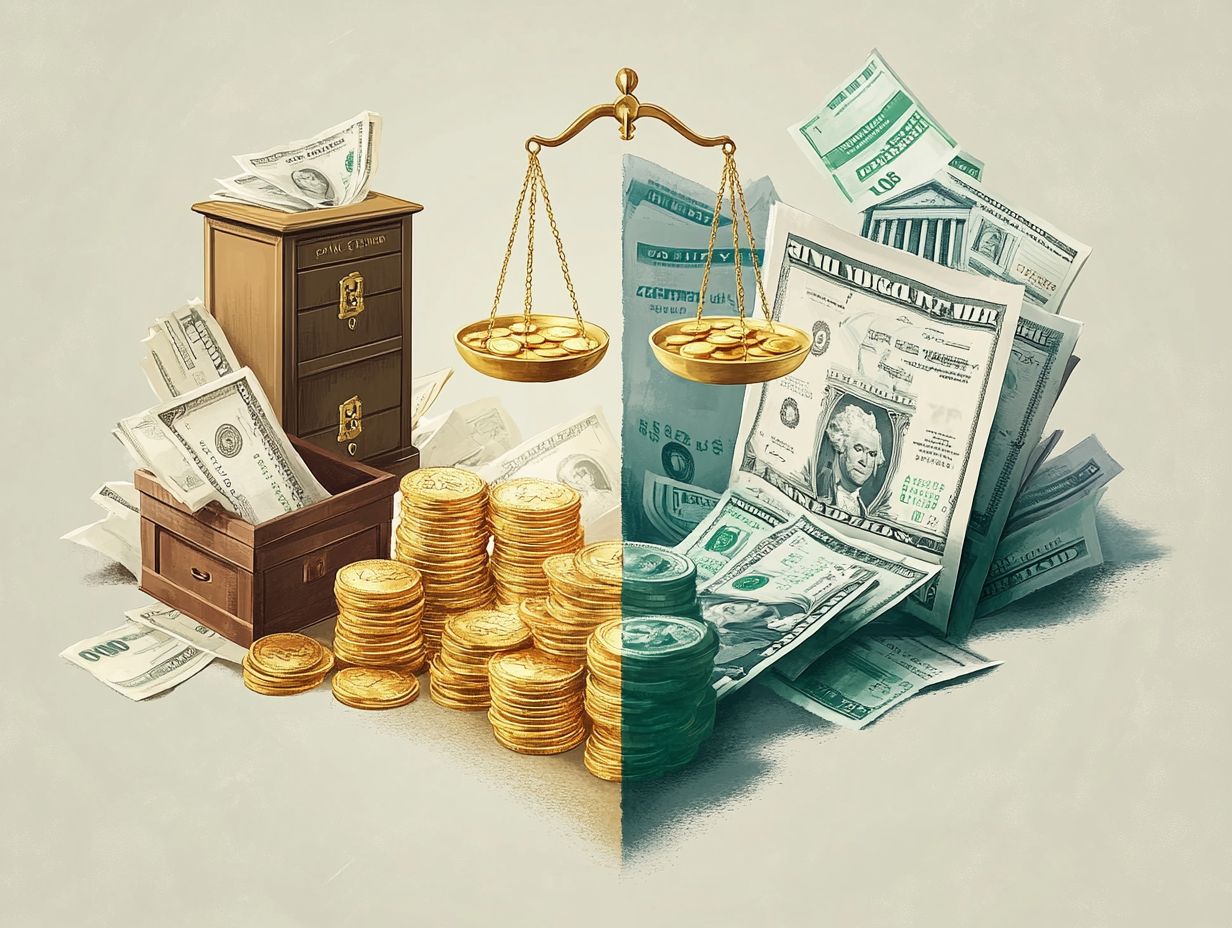
- Physical investments may be vulnerable to market volatility and security concerns, making them riskier than paper investments.
- Paper investments may be affected by inflation and market fluctuations, posing risks to potential returns.
- Physical investments offer long-term stability and tangible assets, providing a secure and reliable investment option.
Understanding the Basics
Understanding the fundamentals of buying and selling physical goods is crucial if you aim to diversify your portfolio. This trading helps you form your investment strategies. It taps into the dynamic world of markets where basic goods like oil, gold, and wheat are bought and sold.
This type of trading gives you direct exposure to the underlying assets that often serve as hedges against inflation and currency fluctuations. Unlike paper trading, which typically relies on derivatives or financial instruments that symbolize commodities, engaging in buying and selling physical goods allows you to actually own the products. For a deeper understanding of the differences, consider exploring investment security: physical vs. paper.
This distinction significantly impacts how easily you can buy or sell an investment without affecting its price. While paper trading may offer greater flexibility, physical trading can provide deeper insights into market sentiment by mirroring real-time supply and demand. For a comprehensive look at the differences, consider exploring understanding physical vs. paper assets in investing.
For instance, an unexpected freeze affecting wheat production can trigger immediate price spikes in the physical market, directly influencing your investment decisions. Understanding the future of investing: physical vs. paper enables you to better assess market risks and potential returns.
Risks of Investments
Investors involved in buying and selling physical goods encounter various risks that can profoundly affect their investment outcomes. These risks arise from market volatility, influenced by factors like geopolitical events, weather fluctuations, and logistical hurdles. Grasping these risk factors is essential for crafting effective investment strategies and maintaining regulatory compliance.
Market Volatility and Security Concerns
Market volatility is a top concern for you as an investor, given that fluctuations can lead to significant financial losses and increased security worries. This volatility often stems from market sentiment, emotional involvement in your trading decisions, and external factors that impact supply and demand.
The unpredictability of markets complicates your trading strategies and tests your psychological resilience. You might find yourself swayed by fear and greed, leading to impulsive choices that could exacerbate your losses. To effectively navigate this landscape, adopting a disciplined approach is essential. You can manage risks by:
- Diversification
- Employing stop-loss orders
- Regularly reviewing your portfolio
It’s crucial to recognize your own risk tolerance. Aligning your strategies with this tolerance enables you to pursue a more sustainable investment approach, ultimately enabling you to weather the storms of market fluctuations with greater confidence. For insights on aligning your investments, consider exploring the future of physical vs. paper investments.
Risks of Paper Investments

Paper trading provides a more straightforward approach to engaging with the financial markets, but it comes with its own unique set of risks, especially in the landscape of inflation and market fluctuations.
These risks can create notable discrepancies between anticipated and actual returns, ultimately affecting the investment capital of those who depend on these methods. Understanding the importance of asset location is crucial in navigating these challenges.
Inflation and Market Fluctuations
Inflation significantly shapes market fluctuations and can greatly impact the success of your investment plans. As prices rise, it s essential for you to continuously reassess your market outlook and adjust your approaches to maintain profitability.
Understanding the intricate relationship between inflation and market performance is vital for navigating these challenges. You ll often find yourself responding to shifting economic indicators, such as interest rates and consumer spending, which directly influence asset values.
Keeping a positive outlook is key to spotting new opportunities! Adapting your investment portfolio to cushion against potential downturns can safeguard your assets and reveal new avenues for growth.
Understanding how inflation affects market behavior is crucial for making informed decisions.
Benefits of Physical Investments
Investing in physical commodities presents many advantages, from long-term stability to the inherent security of tangible assets. These assets act as a safeguard against inflation and market fluctuations, providing a reliable buffer in uncertain times.
By incorporating them into your investment portfolio, you not only bolster your financial strategy but also gain the advantage of greater hands-on quality control and transparency throughout the transaction process, especially when considering investment liquidity: physical vs. paper.
Long-Term Stability and Tangible Assets
Long-term stability is a prized characteristic of physical investments, especially when it comes to tangible assets like precious metals, oil, and wheat. These commodities possess intrinsic value that tends to hold firm against the tides of economic fluctuations.
During times of market uncertainty, you may find yourself drawn to these physical assets, as they can serve as reliable sanctuaries against inflation and recession. For example, gold has been a revered safe haven for centuries, preserving wealth when fiat currencies stumble. Similarly, oil is a cornerstone of the global economy, and its demand offers a degree of predictability, even during turbulent times.
Wheat, as a staple commodity, highlights the critical importance of food security, making it an essential consideration for any well-rounded portfolio.
By weaving these tangible assets into your investment strategy, you can navigate economic storms with greater confidence, positioning yourself for long-term growth and stability.
Benefits of Paper Investments

Paper investments present you with substantial advantages, such as impressive liquidity and the ease of diversifying your investment portfolio. With the growing popularity of options (contracts that give you the right to buy or sell) and exchange-traded funds (ETFs) (funds that track a collection of assets), you ll discover that these instruments offer distinct opportunities to leverage market trends, all while avoiding the complications that often accompany physical trading.
Liquidity and Diversification
Liquidity is a defining trait of your paper investments, enabling you to swiftly convert holdings into cash essential for adapting to the ever-shifting tides of market sentiment. By diversifying through options and exchange-traded funds (ETFs), you can enhance your investment portfolio, reducing risk while maximizing potential returns.
In today’s fast-paced financial landscape, grasping the implications of liquidity is crucial for your investment success. Understanding physical vs. paper investment in platinum can help you manage assets effectively. With the ability to buy or sell assets at a moment’s notice, you can seize opportunities in a fluctuating market, ensuring you remain resilient during downturns.
By incorporating options and ETFs into your strategies, you cultivate a balanced approach that not only mitigates risks but also taps into varying market conditions. This strategic blend enables you to navigate volatility with ease, helping you maintain robust financial health and encouraging long-term growth.
Frequently Asked Questions
What is the difference between physical and paper investments?
Physical investments involve owning tangible assets, such as real estate, precious metals, or artwork. In contrast, paper investments involve owning financial instruments like stocks, bonds, or mutual funds. Physical investments provide security during economic fluctuations, while paper investments offer liquidity and diversification options.
What are the risks associated with physical investments?

Physical investments can face changes in the market. They often need maintenance and insurance costs, making them costly.
What are the risks associated with paper investments?
Paper investments can also face market fluctuations. They might lose value quickly and can be subject to fraud or company bankruptcy.
Which type of investment is more secure?
Both physical and paper investments come with risks. Researching your options is key to minimizing potential losses.
How does liquidity differ between physical and paper investments?
Physical investments, like real estate or precious metals, can be hard to sell quickly for cash. In contrast, paper investments like stocks and bonds are easily traded on the stock market.
What factors should you consider when choosing between physical and paper investments?
Consider your risk tolerance and investment goals. Assess current market conditions and consult a financial advisor before making decisions.










